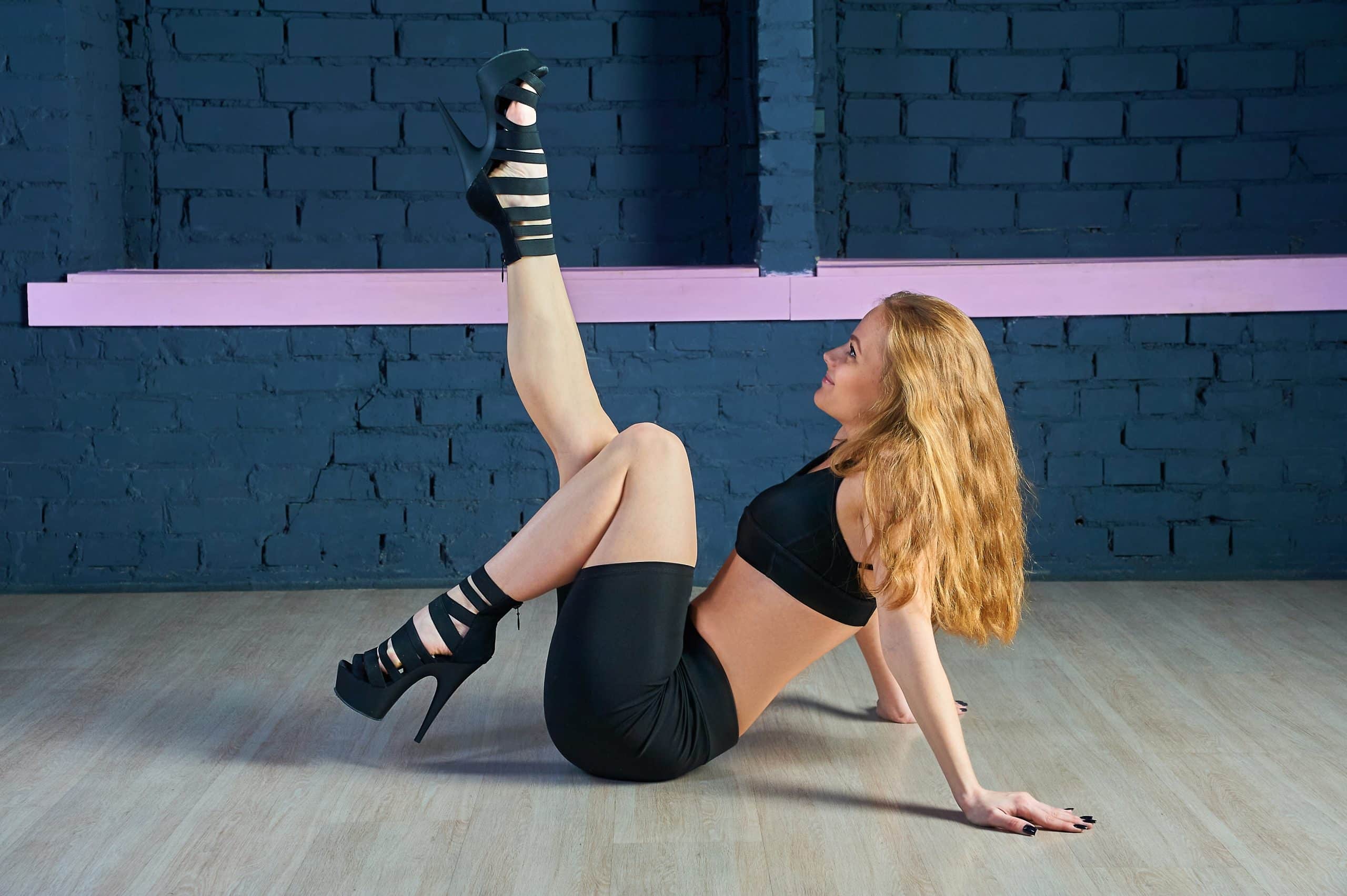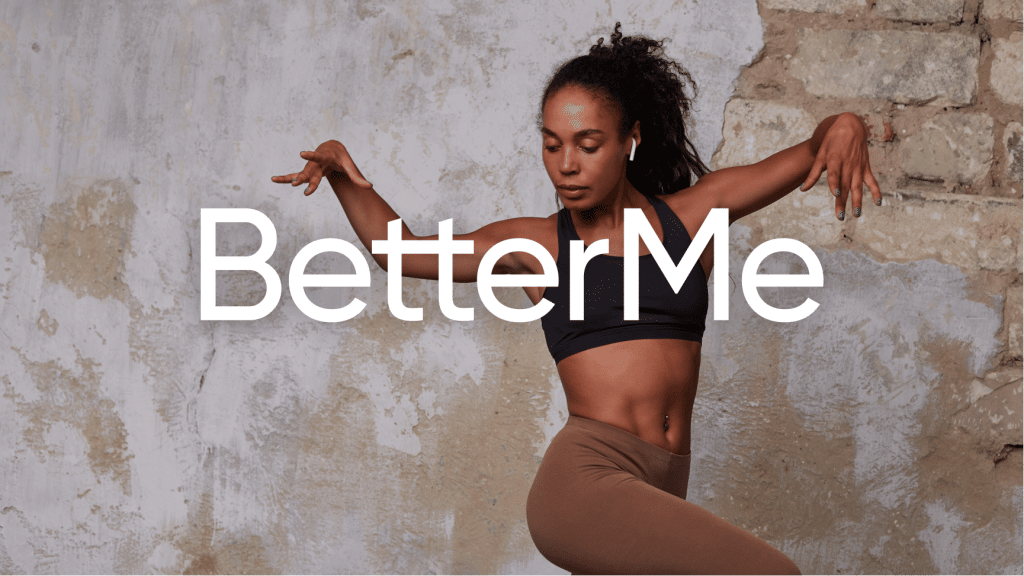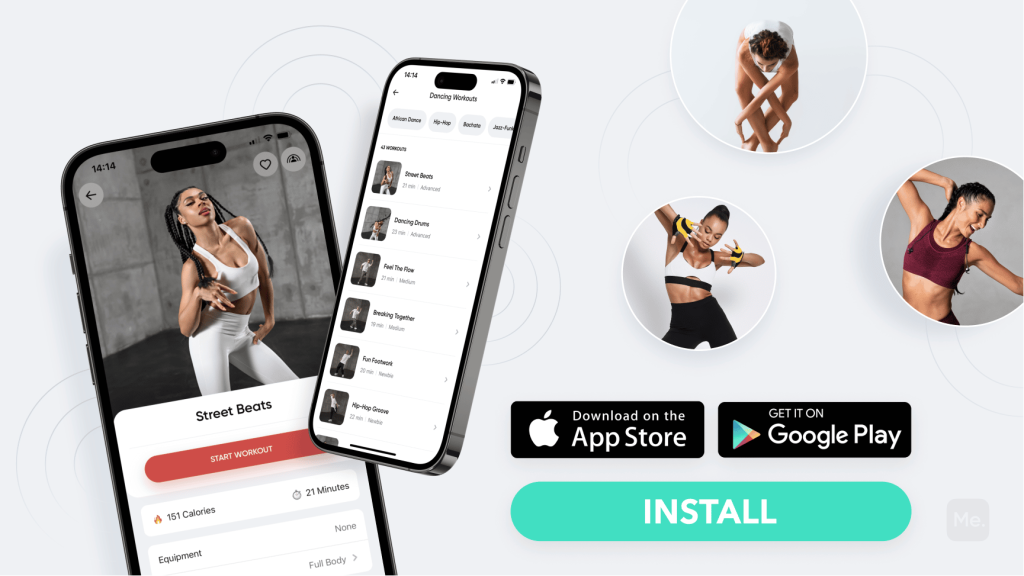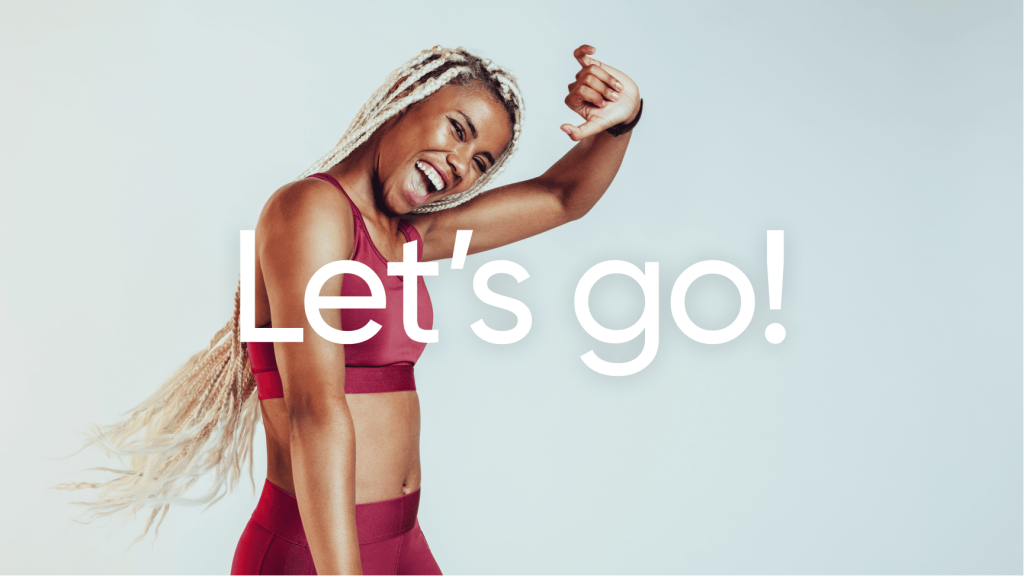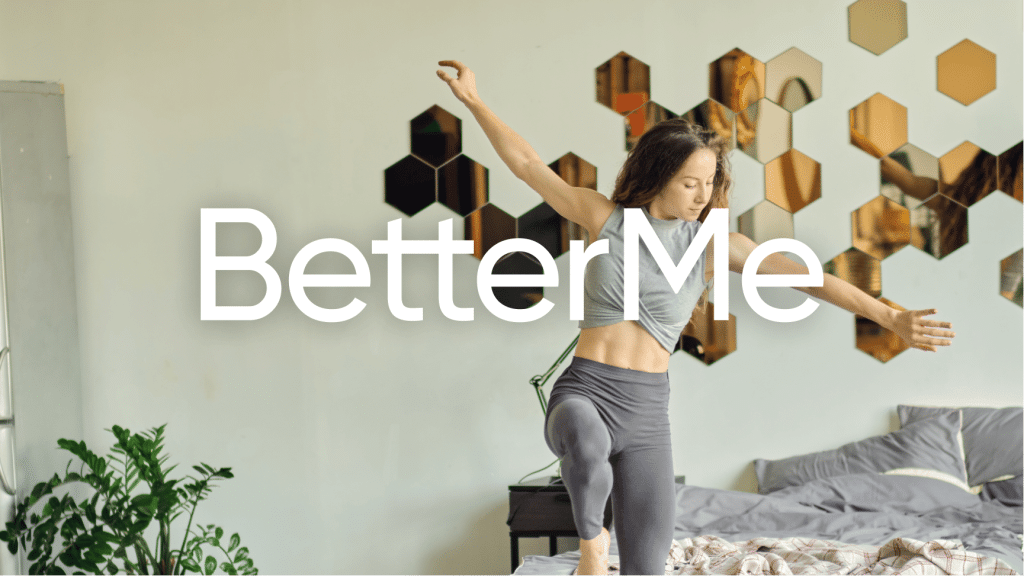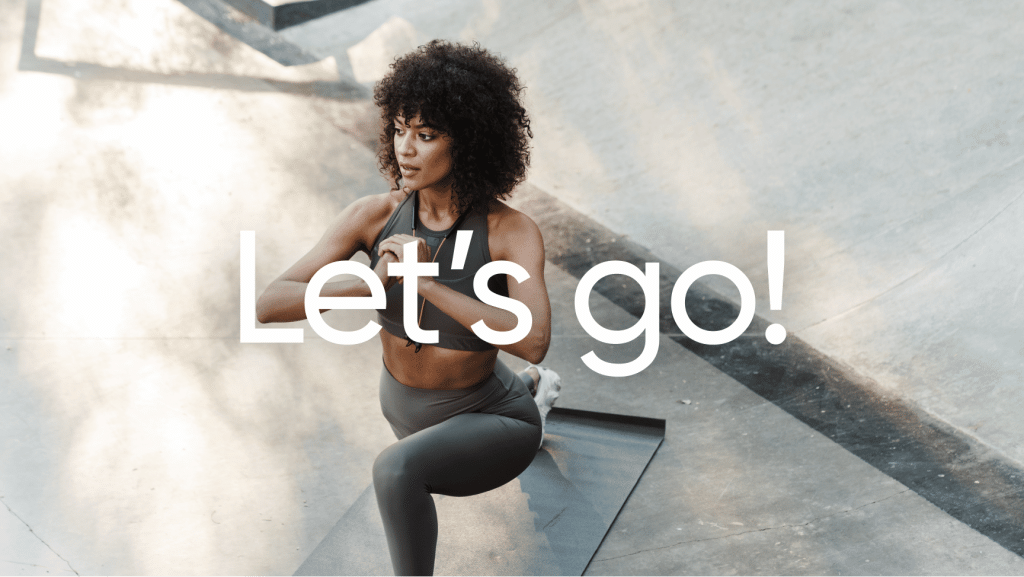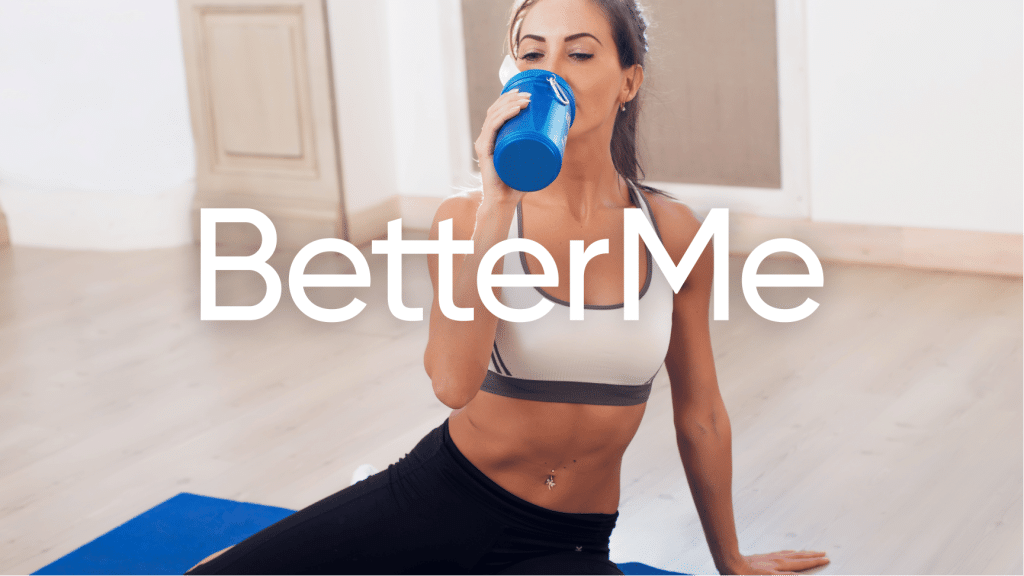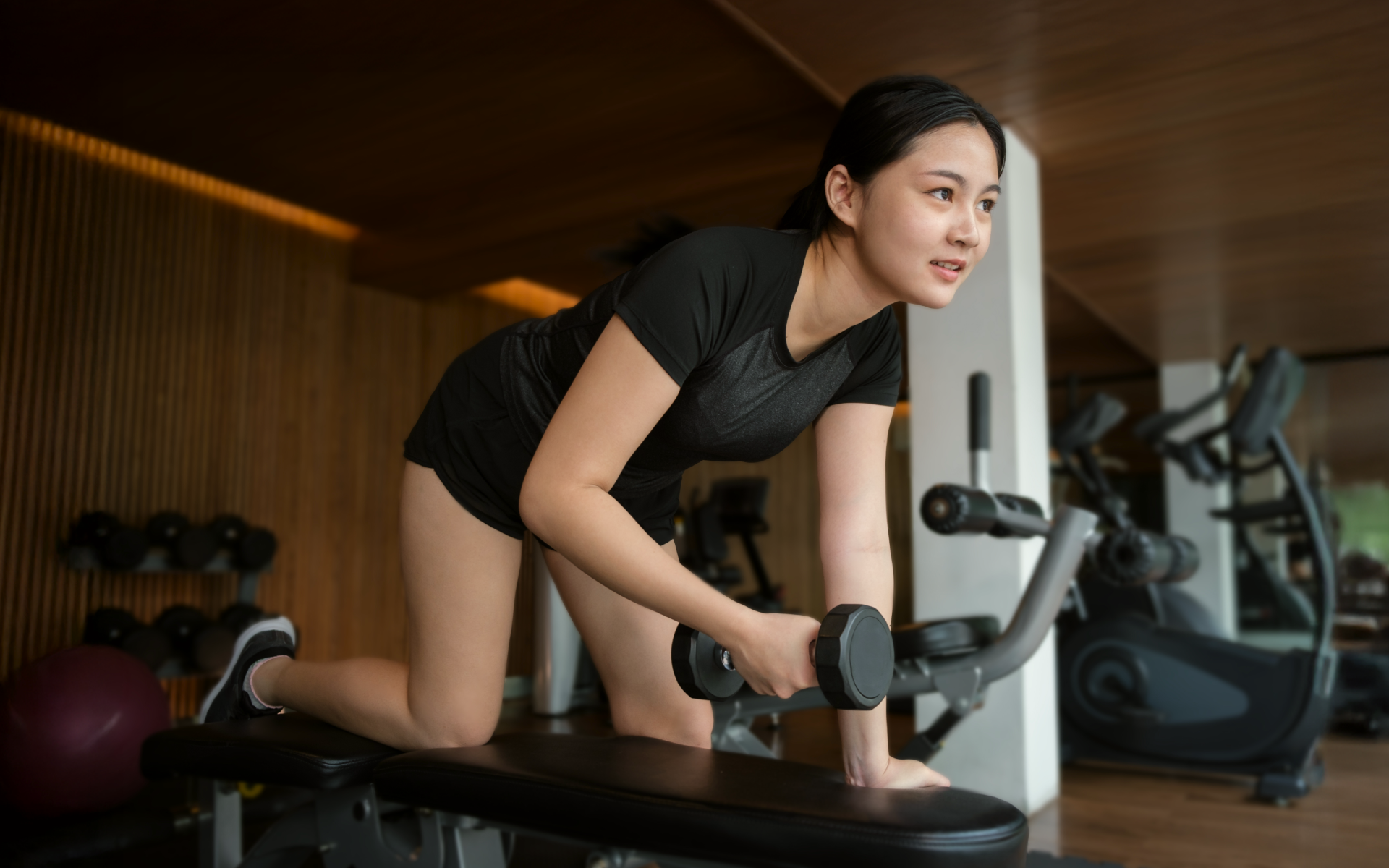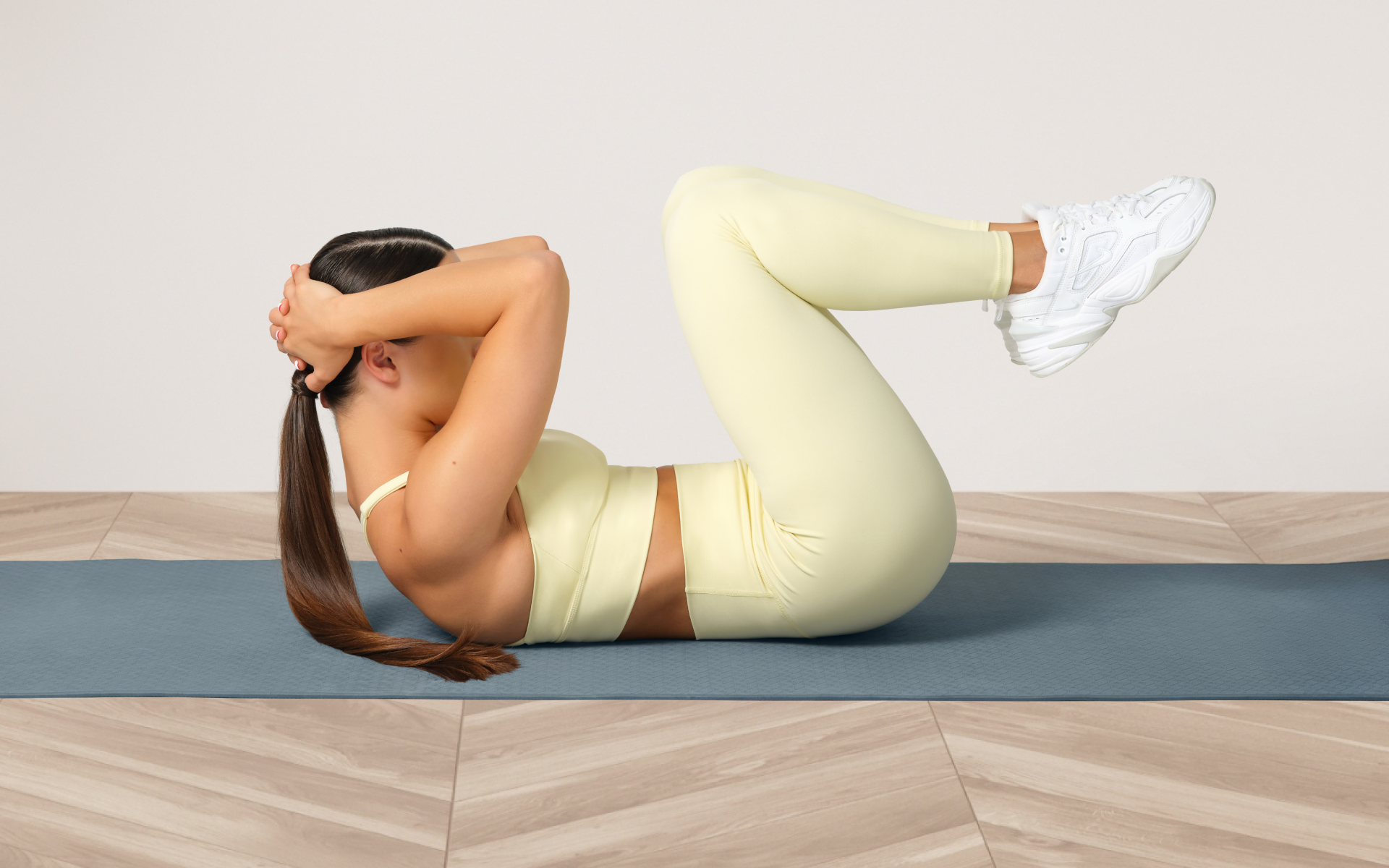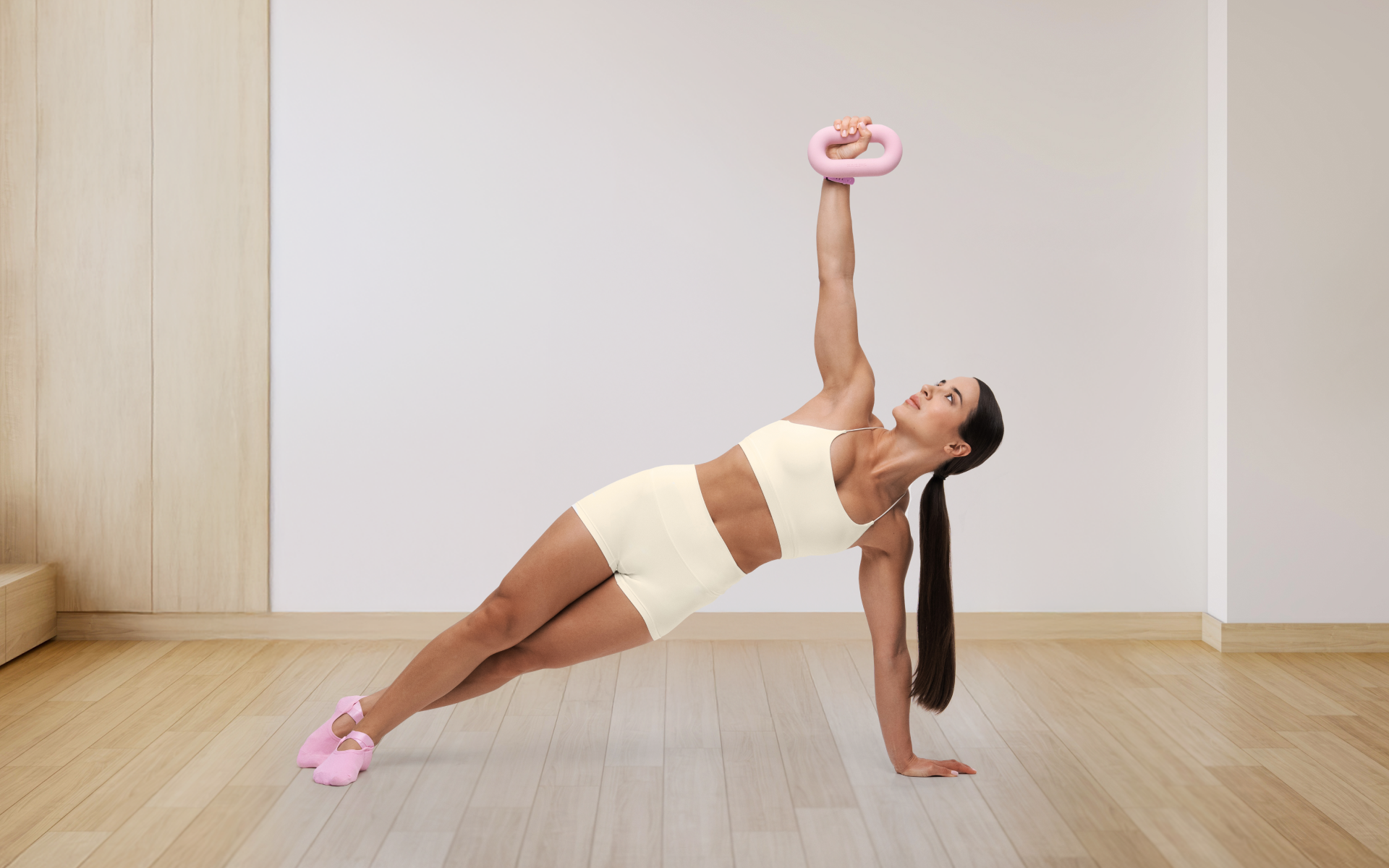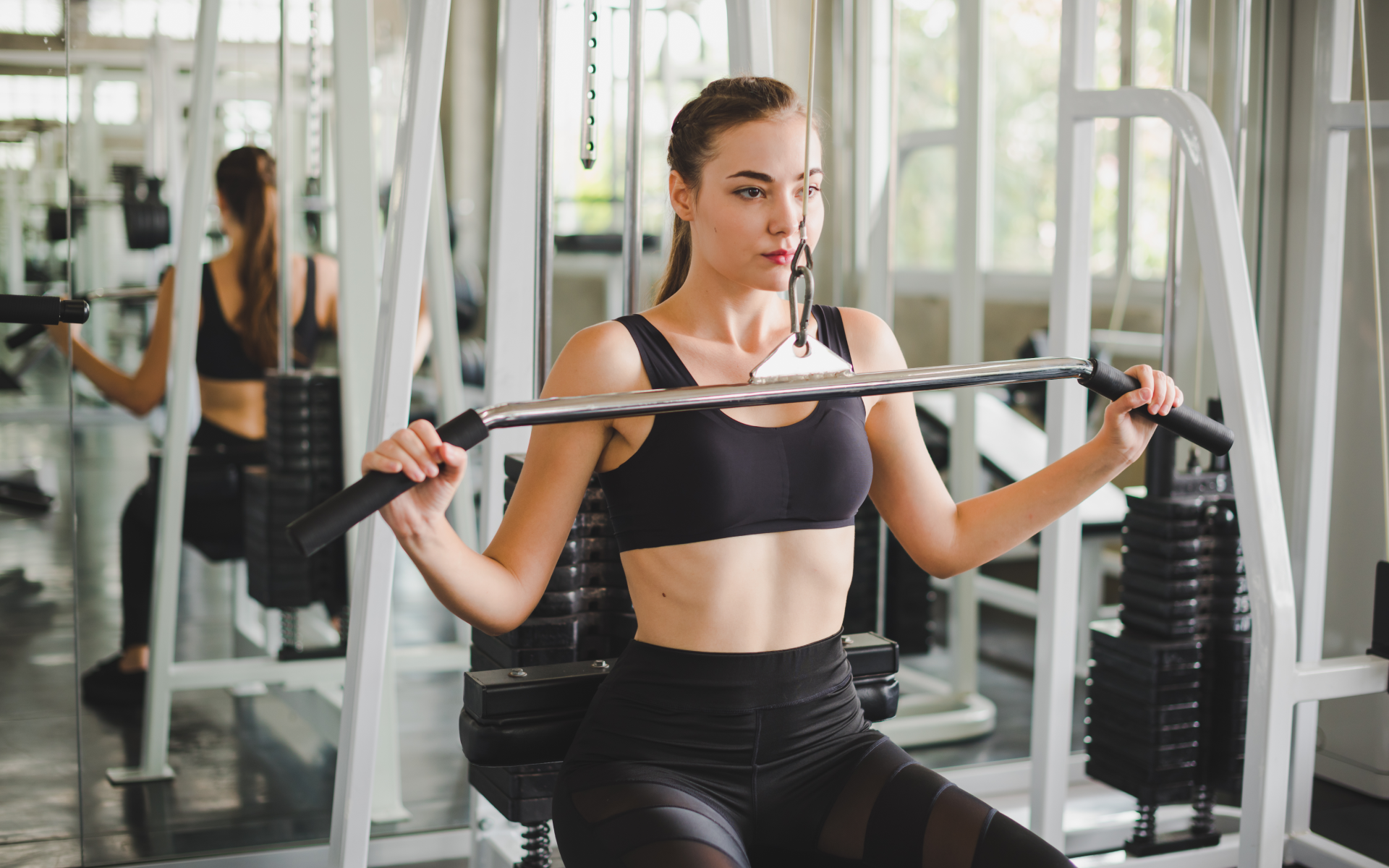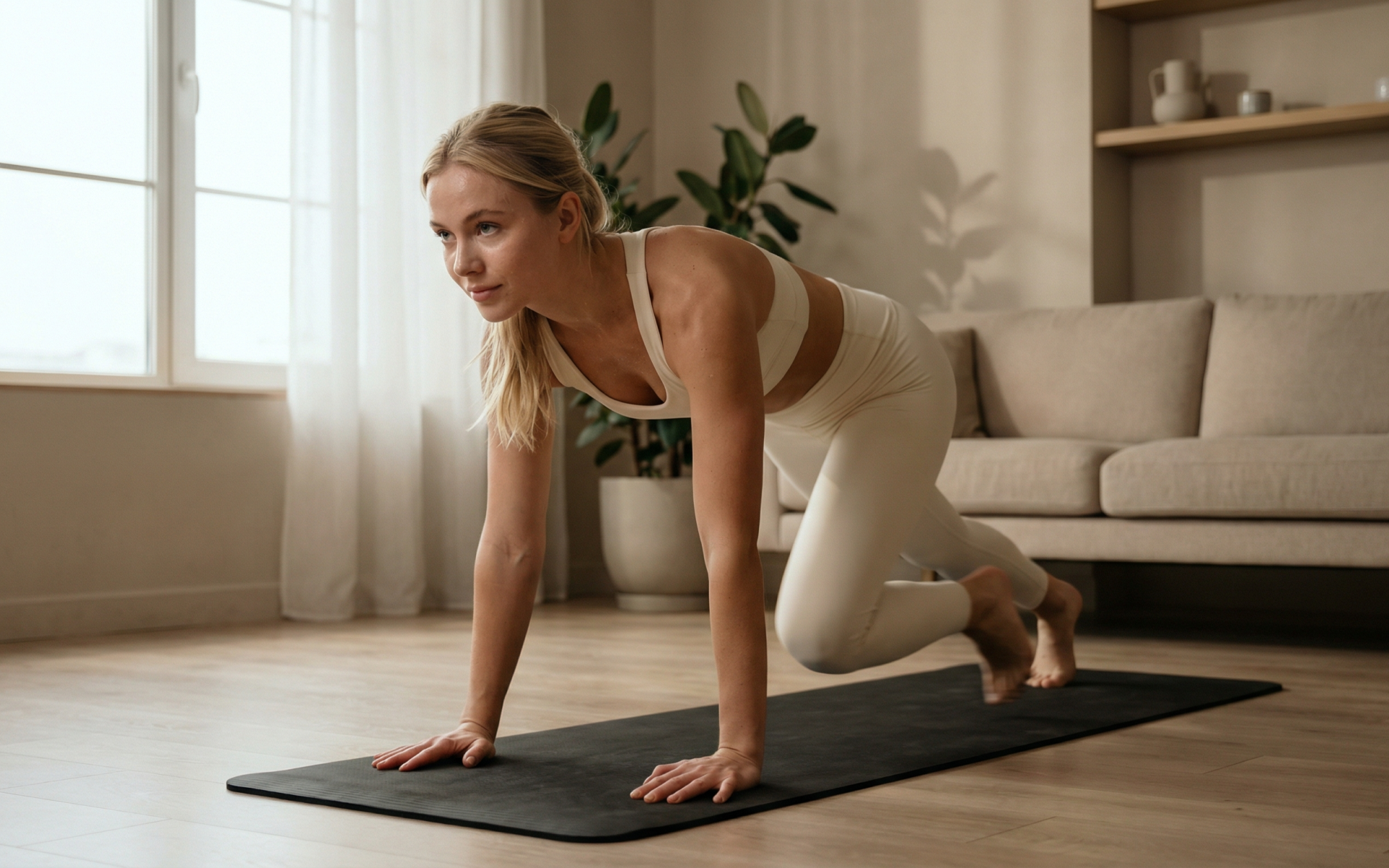Dance has long been associated with positive health outcomes. Just like any other cardiovascular activity, dancing raises your heart rate and increases your endurance (1). Dancing also helps develop coordination, balance, and flexibility. For anyone looking to lose weight or improve their physical fitness, this can be an ideal choice (1). Heels dance is a type of dance that utilizes high heels to create a stylized look and to emphasize a certain type of movement. It is both fun and flirty, giving participants a unique way to express themselves through their movements. Learning the basics of heels dance can help build confidence and provide a great workout. In this article, we’ll provide an overview of what heels dance is, the basics of getting started, and tips for mastering the moves. We’ll also touch on safety considerations and the benefits of taking classes. Let’s get to it!
Get your personalized
meal plan!
What Is Heels Dance?
Heels dance is an upbeat workout that typically utilizes high heels to accentuate movements. It often consists of choreographed sequences that involve a variety of hip hop, jazz, and modern style moves.
The moves in a heels dance class draw on go go, breakdance, hip hop, and modern dance influences. The style is all about having fun and expressing yourself through movement. While it can be done in a class or with friends, it can also be performed solo.
The history of heels dance isn’t as extensive as other forms of dance that were developed centuries ago. In fact, it has only been around for a few decades, as the invention of the high heel in the early 20th century and then the subsequent development of dance styles utilizing them.
Heels dance is hardly ever a social dance that you can do with a partner, and almost always is performed in class or otherwise as a solo routine.
That said, it’s mostly for professionals who perform for different audiences. However, anyone can join a class or learn the basics of heels dance on their own. Its growing popularity has led to a rise in classes and tutorials for those who want to learn.
Read More: Bachata Dance Workout For Beginners – Lose Weight, Get Fit, And Have Fun
Should I Learn Heels Dance?
Not everyone is an ideal candidate for learning heels dance.
Before you begin, it’s important to consider your physical fitness and any injuries or limitations that might affect your ability to do the moves safely. Heels dance can be strenuous, and it’s important to ensure that you have the physical capacity for it before starting classes.
To clarify, you may be an ideal candidate for a heels dance class if you:
Have Developed Balance And Coordination
Balance and coordination are two non-negotiable skills that you need to have developed before taking on heels dance. These skills are honed through other forms of dance, like jazz and modern.
Are Comfortable Wearing High Heels
High heels can be tricky to wear, so it’s important to be comfortable moving and dancing in them before you attempt a heels dance class.
Are Physically Fit
Heels dance involves vigorous movements, so you should have a basic level of physical fitness before beginning classes.
Are Looking For An Upbeat And Fun Workout
Heels dance is a great way to get a workout and have fun while doing it. It’s also an excellent way to express yourself through movement.
Are Looking To Break The Monotony Of Traditional Gym Workouts
If you’re looking for an alternative to hitting the treadmill or lifting weights, heels dance might be a great fit. It’s an effective way to break up your regular workout routines and add a new element of fun.
Are Looking For A Confidence Boost
Heels dance could be a great way to build your confidence and feel more comfortable in your own skin.
On the other hand, you might have to reconsider signing up for a heels dance class if you:
Have Any Major Physical Limitations
If you have any serious injuries or physical limitations, it’s important to consider whether heels dance is appropriate for you. Your doctor or physical therapist can help you determine if it’s something you should pursue.
Are New To Dance
You should have some basic understanding of dance before taking on heels dance. If you’re completely new to dance, start with other forms like jazz and modern to build your skills first.
Are Uncomfortable Wearing High Heels
If you’re not comfortable or confident wearing high heels, it might be better to start with a different style of dance. Alternatively, start with low-heeled shoes and work your way up.
BetterMe app will kick you out of the mental funk, shake off your extra weight, rid you off your energy-zapping habits, and help you sculpt the body of your dreams. Intrigued? Hurry up and change your life for the better!
How Do You Start Dancing In Heels?
To start dancing in heels, you’ll follow these three steps; prepare your body, find a professional, and practice consistently.
Step 1: Prepare Your Body
You could always turn up for a class and give it a go, but if you want to learn heels dance correctly, it’s important to prepare your body first.
More than the pre-workout activities, we like to warm up to heels dance with a few weeks or days of related exercises like stretching, balance conditioning, and taking classes with a similar foundation like ballet or jazz.
Stretching For Heels Dance
Stretching refers to any type of exercise that lengthens and relaxes the muscles, preparing them for activity.
For heels dance, you’ll focus on specific stretches targeting the ankles (these experience more pressure and stress when wearing high heels), calves, and hips. You can throw in some full body stretches as well, since you’ll be engaging multiple muscle groups when you dance.
Ankle Stretches For Heels Dance
Equipment needed: a resistance band and yoga mat
Ankle Circles
- Sit on the floor, legs outstretched in front of you.
- Lift one leg and rotate it in a circular motion around the ankle joint. Do this 10-15 times with one leg, then switch to the other and repeat.
Heel Walk & Toe Walk
- Loop a resistance band around your feet and stand up.
- Take 10 steps forward, all on your toes, then 10 steps backwards on your heels.
- Repeat 2-3 times.
Heel Drops
- Stand up and shift your weight onto one foot.
- Lift the other leg slightly off the ground, then gently drop your heel.
- Do 10-15 repetitions on each side.
Resistance Band Ankle Stretch
- Sit on the floor and loop a resistance band around your feet.
- Lift one leg slightly off the ground, stretching the band.
- Hold for 10-15 seconds before switching to the other leg.
Calf Stretches For Heels Dance
Equipment needed: wall or chair and yoga mat
Wall Calf Stretch
- Stand facing a wall, hands against it for support.
- Put one foot back and press the heel into the ground while keeping your toes up.
- Hold this stretch for 10-15 seconds, then switch to the other side.
Read More: Zumba Dance For Weight Loss: Can You Really Just Dance Those Pounds Away?
Seated Calf Stretch
- Sit on the floor with your legs outstretched in front of you.
- Loop a resistance band around one foot and pull it back towards you, keeping your toes up as you stretch.
- Hold for 10-15 seconds on each side.
Chair Calf Stretch
- Find a chair or bench and sit down, feet flat on the ground.
- Put one foot behind you and press it against the seat of the chair, keeping your toes up as you stretch.
- Hold for 10-15 seconds, then switch to the other leg.
Hip Stretches For Heels Dance
Equipment Needed: Yoga Mat
Standing Hip Stretch
- Stand up and cross one leg in front of your body, foot flat on the ground and knee slightly bent.
- Push your hip forward and hold for 10-15 seconds on each side.
Yoga Pigeon Pose
- Come down to your hands and knees, then bring one leg forward until the knee is directly underneath the hip.
- Put your foot on the floor and push your hip forward until you feel a stretch in the glutes.
- Hold for 10-15 seconds, then switch to the other side.
Yoga Figure 4 Stretch
- Lie on your back and cross one leg over the other, putting your ankle just above your knee.
- Hold onto the back of your thigh and press it into the ground until you feel a stretch.
- Hold for 10-15 seconds on each side.
Balance Conditioning For Heels Dance
Having good proprioception (sense of body position and movement in space) is essential for heels dance, so it’s important to do exercises that work on your balance.
Wearing heels more frequently also helps to improve your balance.
Any exercise that strengthens your core and leg muscles, such as planks and squats, can be beneficial. Additionally, trying specific balance exercises like single-leg stands or balancing on one foot can also help.
Equipment needed: balance disc, fitness ball, and yoga mat
Single Leg Balance
- Stand up on one leg and hold for 10-15 seconds.
- You can also try closing your eyes or adding arm movements to make it more challenging.
Balance Disc Squats
- Sit on a balance disc and try to stay balanced as you squat.
- Do 15-20 repetitions.
Fitness Ball Balance
- Sit on a fitness ball and try to stay balanced as you move side to side or front to back.
- Do 10-15 repetitions on each side.
Tree Pose
- Stand up and put one foot against your inner thigh, knee slightly bent.
- Keep your arms extended out in front and hold for 10-15 seconds.
- Switch to the other side and repeat.
Lean and toned up body isn’t just a far-fetched fantasy. Check out the BetterMe app and watch it propel your weight loss journey into high gear!
Taking Classes With A Similar Foundation
Taking classes in ballet, jazz, tap, or any other related dance style can also help to improve your heels dancing ability. These styles all have a similar foundation, so learning the basics of them can help you in your heels dancing.
Additionally, focusing on technique, alignment and presence is essential for any style of dance and is especially important for heels dancing.
Step 2: Find A Professional Heels Dance Instructor
Working with a professional heels dance instructor can help to take your dancing to the next level.
An experienced instructor can provide feedback on your technique and help you to develop choreography that works with your individual style. Additionally, your risk of injury can be reduced with proper instruction.
Step 3: Practice, Practice, Practice!
A key to mastering any skill is consistent practice. Not only will this help to build your confidence, but it will also give you the skills needed to become a great heels dancer.
Be sure to set aside time each week to practice and refine your skills. You can also look for practice classes in your area or find online resources to help you improve.
What Do I Need To Bring To Heels Dance Class?
Now that we’ve gotten the basics of learning heels dance down, it’s time to get set up for class. Here is a quick list of what you should bring to class:
Proper Heels Dance Attire
You’re probably wondering, “what should I wear to a heels dance class?”. The important thing is to wear something comfortable that allows you to move freely.
Heels dance classes usually require dancers to wear form-fitting clothing, such as leggings or a crop top and shorts. Why? So that you can see your body and check for correct alignment.
In addition to being form-fitting, heels dance attire should be:
- Lightweight and breathable – avoid heavy fabrics like denim. You want to feel free to move without being weighed down by heavy clothing. Furthermore, breathable fabric is important to avoid overheating.
- Supportive – avoid fabrics that are too flimsy or stretchy like cotton. Look for a fabric that will support your movements as you dance.
- Sweatproof – avoid fabrics like silk or satin that will become slippery and make dancing uncomfortable.
- Squatproof – avoid fabrics that may become transparent or tear when you bend or squat.
- Anti-chafing – avoid fabrics that may cause discomfort or friction when you move.
We highly recommend one of these BetterMe Matching Sets to get you started (2). They’re designed to be lightweight and supportive, sweatproof, squatproof, anti-chafing and super comfortable. That’s not all, they’re stylish and can be worn as everyday wear as well.
The Right Shoes
When it comes to heels dancing, the right shoes are essential. We recommend a pair of heels that are:
- Low and have a wide block heel for stability and balance – beginners should avoid stilettos or platforms as these can be difficult to balance in.
- Supportive (pick boot heels or ankle boots over sandals) – these offer more ankle support in case of slipping.
- Made of fabric or suede material – avoid plastic or leather as they may slip or become uncomfortable with sweat.
- Wide at the front for more space for your toes – this will help to keep your feet supported and reduce the risk of slipping.
Once you’ve mastered the basics of heel dancing, you can advance to higher heels with thinner block heels and stilettos.
A Water Bottle
As with any physical activity, it’s important to stay hydrated. Be sure to bring a water bottle with you to every heels dance class and take regular breaks as needed.
Good Music
The right music can really help to get your creative juices flowing. If you’re taking a class, the instructor will likely provide some songs
However, if you’re practicing on your own, be sure to pick some upbeat and inspiring songs that will help motivate you.
Safety Precautions For Heels Dance
You’ve geared up and signed up for a heels dance class, but before you hit the floor there are a few safety tips to keep in mind:
You Must Warm Up
Warm up sessions are an underrated but essential part of any physical activity. Before you attempt any heels dance move, make sure to stretch and warm up your muscles first. This will help to prevent any strain or injury while dancing.
Some ideal warm up moves include:
- Arm circles
- Leg swings
- Side bends
- Trunk rotations
- Bridges
No Risky Moves
Heels dance can be intense and complex, so always practice caution and never attempt any move that you are not comfortable with. If something feels too difficult, take a break or ask your instructor for help before pushing yourself too hard.
Always listen to your body and be aware of any pain or soreness you feel in order to avoid injury.
Cool Down Afterward
Cool down sessions are just as important as warm up sessions. Spend a few minutes stretching and cooling down your muscles after each class to avoid any soreness the next day.
Some cool down activities include light stretching, yoga poses and foam rolling. The idea is to slowly reduce your heart rate and help your body return to its resting state.
Take Rest Days
Your body needs time to recover after each workout, so be sure to give yourself at least one rest day per week. No matter how much fun you’re having, it’s important to take care of your body so that it can serve you for longer.
The Bottom Line
Heels dance is a great way to stay active, have fun and express yourself. With these tips, you’ll be able to safely and confidently hit the dance floor in no time.
DISCLAIMER:
This article is intended for general informational purposes only and does not serve to address individual circumstances. It is not a substitute for professional advice or help and should not be relied on for making any kind of decision-making. Any action taken as a direct or indirect result of the information in this article is entirely at your own risk and is your sole responsibility.
BetterMe, its content staff, and its medical advisors accept no responsibility for inaccuracies, errors, misstatements, inconsistencies, or omissions and specifically disclaim any liability, loss or risk, personal, professional or otherwise, which may be incurred as a consequence, directly or indirectly, of the use and/or application of any content.
You should always seek the advice of your physician or other qualified health provider with any questions you may have regarding a medical condition or your specific situation. Never disregard professional medical advice or delay seeking it because of BetterMe content. If you suspect or think you may have a medical emergency, call your doctor.
SOURCES:
- Dance – health benefits (n.d., betterhealth.vic.gov.au)
- Matching Sets (n.d., betterme.world)
